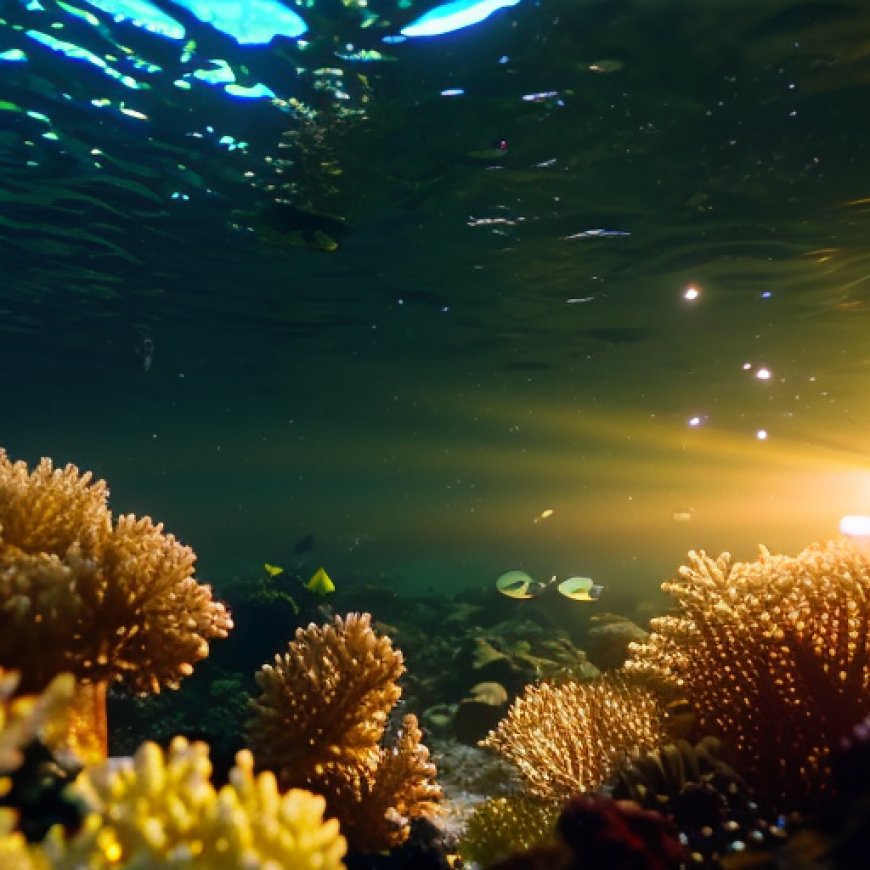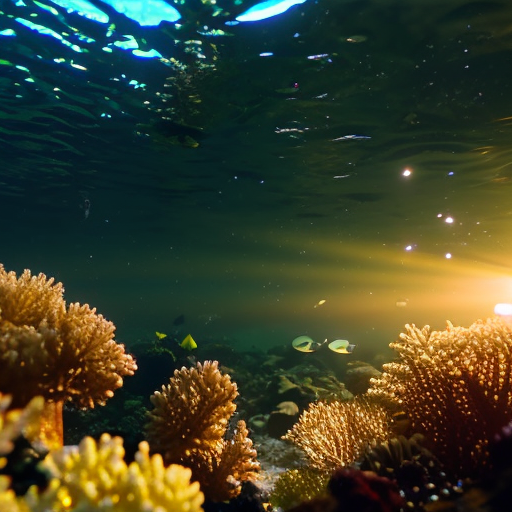Light pollution affects coastal ecosystems too – this underwater ‘canary’ is warning of the impacts
Light pollution affects coastal ecosystems too – this underwater 'canary' is warning of the impacts The Conversation


The Role of Triplefins in Monitoring Coastal Ecosystems
In the early 20th century, canaries were used as early warning systems in coal mines to alert miners to rising levels of carbon monoxide.
A small unremarkable fish may fill a similar role in coastal ecosystems around Aotearoa New Zealand.
Introduction to Triplefins
Triplefins, or kokopara, are common in a range of shallow coastal habitats across the country. They are a diverse group of fishes, with 26 endemic species living on our shores, and they make excellent “canaries” for the coastal marine environment, helping us to understand and possibly address pollution.
Research using triplefins has already shown increased consumption of microplastics by fish living closer to urban areas. Studies have also identified molecular responses to multiple chemical pollutants and described cognitive damage caused by loss of habitat complexity.
Noise pollution from small boats also has negative effects on coastal fish. And now, new research is investigating the surprising impact of light pollution on coastal ecosystems.
An Underwater ‘Canary’
Human activity around coastal waters is intense, about triple the rate of other areas, and it affects ecosystems such as beaches and wetlands.
Coastal urbanisation introduces a range of challenges for near-shore ecosystems, including pollutants, plastics, sound, and light.
Light pollution is often recognised for the limitations it imposes on astronomers and stargazers, but a growing body of research has begun to document effects on the health of animals and ecosystems.
- Scientists have found coastal fishes in tropical and temperate environments, including the common triplefin, reproduce and grow in a cyclical pattern which follows the monthly lunar cycle.
- Patterns in nocturnal illumination (known as artificial light at night, or ALAN) of surface waters have a surprisingly large impact on these fish. The prevalence of light pollution from cities (in this case New Zealand’s capital Wellington) can potentially interfere with their breeding cycles.
Bright City Lights
It may not seem that the effects of light on a tiny fish are a big deal, but triplefins are a clear indicator of what could be happening in other fish.
In marine ecosystems, small changes have a way of propagating further up the food chain. In the light pollution example, theory suggests small-scale, relatively short-term fluctuations in small prey species like the common triplefin are likely to appear later as long-term fluctuations in larger species at a greater spatial scale, with genuine implications for pelagic fisheries.
In an instance such as this, the triplefin is indeed acting as a canary for potential changes affecting the entire marine food web.
Conclusion
We know what affects one fish species may not affect others. But equally, we can’t carry out experiments on every species. What the humble triplefin can tell us is that coastal ecosystems are in trouble, not just from water quality and pollution, but from the lights and sounds of our big cities.
Like the miners, we need to pay attention to the animals we use as indicators. The triplefins are asking us to embrace the dark and there are many ways in which our cities can do this.
- Communities can choose LED lightbulbs and shaded fixtures for street lights, so they only point down.
- Sensible use of dimmers and timers will help turn off unnecessary lights.
- Aotearoa New Zealand hosts two of the world’s few dark sky reserves, in Aoraki-McKenzie and, more recently, in the Wairarapa, as well as two dark sky sanctuaries (Aotea/Great Barrier Island and Rakiura/Stewart Island).
New Zealand could be on track to become the second dark sky nation in the world (after Niue).
SDGs, Targets, and Indicators
| SDGs | Targets | Indicators |
|---|---|---|
| SDG 14: Life Below Water | Target 14.1: By 2025, prevent and significantly reduce marine pollution of all kinds, particularly from land-based activities, including marine debris and nutrient pollution | – Increased consumption of microplastics by fish living closer to urban areas – Molecular responses to multiple chemical pollutants – Cognitive damage caused by loss of habitat complexity |
| SDG 15: Life on Land | Target 15.1: By 2020, ensure the conservation, restoration, and sustainable use of terrestrial and inland freshwater ecosystems and their services, in particular forests, wetlands, mountains, and drylands, in line with obligations under international agreements | – Noise pollution from small boats negatively affecting coastal fish – Light pollution affecting triplefin growth patterns and foraging ability |
| SDG 11: Sustainable Cities and Communities | Target 11.6: By 2030, reduce the adverse per capita environmental impact of cities, including by paying special attention to air quality and municipal and other waste management | – Light pollution from cities interfering with the breeding cycles of coastal fishes |
1. Which SDGs are addressed or connected to the issues highlighted in the article?
- SDG 14: Life Below Water
- SDG 15: Life on Land
- SDG 11: Sustainable Cities and Communities
2. What specific targets under those SDGs can be identified based on the article’s content?
- Target 14.1: By 2025, prevent and significantly reduce marine pollution of all kinds, particularly from land-based activities, including marine debris and nutrient pollution
- Target 15.1: By 2020, ensure the conservation, restoration, and sustainable use of terrestrial and inland freshwater ecosystems and their services, in particular forests, wetlands, mountains, and drylands, in line with obligations under international agreements
- Target 11.6: By 2030, reduce the adverse per capita environmental impact of cities, including by paying special attention to air quality and municipal and other waste management
3. Are there any indicators mentioned or implied in the article that can be used to measure progress towards the identified targets?
- Increased consumption of microplastics by fish living closer to urban areas
- Molecular responses to multiple chemical pollutants
- Cognitive damage caused by loss of habitat complexity
- Noise pollution from small boats negatively affecting coastal fish
- Light pollution affecting triplefin growth patterns and foraging ability
- Light pollution from cities interfering with the breeding cycles of coastal fishes
4. Table: SDGs, Targets, and Indicators
| SDGs | Targets | Indicators |
|---|---|---|
| SDG 14: Life Below Water | Target 14.1: By 2025, prevent and significantly reduce marine pollution of all kinds, particularly from land-based activities, including marine debris and nutrient pollution | – Increased consumption of microplastics by fish living closer to urban areas – Molecular responses to multiple chemical pollutants – Cognitive damage caused by loss of habitat complexity |
| SDG 15: Life on Land | Target 15.1: By 2020, ensure the conservation, restoration, and sustainable use of terrestrial and inland freshwater ecosystems and their services, in particular forests, wetlands, mountains, and drylands, in line with obligations under international agreements | – Noise pollution from small boats negatively affecting coastal fish – Light pollution affecting triplefin growth patterns and foraging ability |
| SDG 11: Sustainable Cities and Communities | Target 11.6: By 2030, reduce the adverse per capita environmental impact of cities, including by paying special attention to air quality and municipal and other waste management | – Light pollution from cities interfering with the breeding cycles of coastal fishes |
Behold! This splendid article springs forth from the wellspring of knowledge, shaped by a wondrous proprietary AI technology that delved into a vast ocean of data, illuminating the path towards the Sustainable Development Goals. Remember that all rights are reserved by SDG Investors LLC, empowering us to champion progress together.
Source: theconversation.com

Join us, as fellow seekers of change, on a transformative journey at https://sdgtalks.ai/welcome, where you can become a member and actively contribute to shaping a brighter future.







